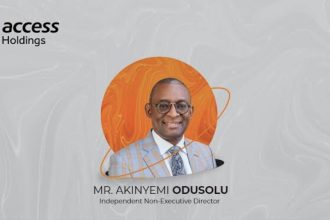Viewpoint by Oludare Ogunlana
When we propose theories, we seek to answer critical questions and offer frameworks for understanding real-world phenomena. One such enduring theory is Edmond Locard’s Exchange Principle, a foundational tenet in forensic science. Locard posited that “every contact leaves a trace,” suggesting that a perpetrator of a crime will bring something into the crime scene and leave with something from it, thus providing evidence that can be used in investigations.
This principle remains highly relevant in the field of cybercrime investigation and digital forensics. Despite the non-physical nature of digital crimes, traces—such as IP addresses, login metadata, system logs, and even metadata embedded in files—can often be retrieved and analyzed to trace actions back to a specific user or entity. In essence, digital footprints function much like physical traces in traditional forensic science.
In recent developments within the Nigerian sociopolitical landscape, a contentious issue has emerged that mirrors Locard’s principle. A woman claiming to be “Professor Mgbeke,” who presented herself as an independent media professional, was accused of being covertly aligned with powerful political interests. While she denied any communication with Nigeria’s Senate President, Godswill Akpabio, forensic analysis of digital evidence allegedly contradicted her public claims.
One key revelation came through call logs, which purportedly showed a conversation with the Senate President shortly before her broadcast denying any such contact. This directly illustrates the application of digital forensics in verifying truthfulness. Much like in the 2015 Hillary Clinton email controversy or the use of metadata in the 2020 Twitter hack investigation, digital evidence can either corroborate or contradict testimonies given in public forums.
Furthermore, social media evidence provided additional clues. A recent update to her Facebook profile declared, “Calls for Prof. Mgbeke will be recorded.” This seemingly innocuous update now forms part of a digital chain of evidence, suggesting that communication monitoring was anticipated or premeditated—possibly to support or disprove future claims.
The issue deepens with the mention of a figure named “Sandra Duru,” alleged to have a history of self-aggrandizing social media behavior and politically motivated actions. A cursory search on open-source intelligence platforms reveals multiple instances where online behavior and digital traces contributed to building a profile of patterns indicative of opportunistic affiliations and potentially orchestrated media campaigns. These tactics bear resemblance to known operations of black PR firms that exploit public opinion through coordinated narratives, as seen in the Cambridge Analytica scandal.
The convergence of forensic theory, digital evidence, and public accountability underscores the importance of transparency and ethical conduct, especially for individuals presenting themselves as public intellectuals or journalists. When professionals betray public trust, whether through deceit or concealed affiliations, they undermine the credibility of media institutions and erode the foundations of informed discourse.
In conclusion, Locard’s Exchange Principle is not confined to crime scenes dusted for fingerprints. It extends powerfully into the digital realm, where every click, call, and content update may serve as evidence. As such, digital forensics must continue to evolve in sophistication to hold individuals accountable in an age where disinformation and manipulation can be masked under the veneer of credibility.
Oludare Ogunlana, Ph.D., CISPP
Professor of Cybersecurity, TX, USA




